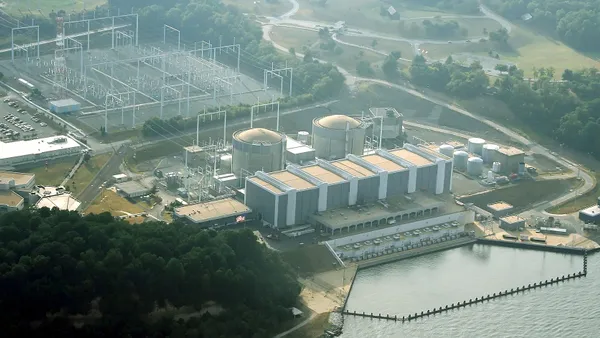SunEdison’s $2.4 billion buy of First Wind is far more than the merging of a solar company and a wind company into the world’s biggest renewable energy developer.
It is the beginning of a whole new way for the power system and utilities to think about renewable energy.
“We should sell a renewable product, 8000 hours per year, 24 hours per day, that combines hydro and wind and solar and whatever,” said First Wind CEO Paul Gaynor. “That would create real breakthroughs on displacing gas and coal and hitting those big market share numbers.”
International powerhouse solar developer SunEdison and its YieldCo TerraForm Power acquired First Wind in a complex 3-way deal that raises their combined 2015 development expectation to between 1.6 gigawatts and 2.3 gigawatts and their combined international project pipeline to 8 gigawatts.
On the strength of the deal, TerraForm increased its expected 2015 per share dividend 44% from $0.90 to $1.30 per share. The YieldCo investment vehicle, which just added 32% in value through its July IPO, will now have First Wind’s 521 megawatts of operating projects’ expected cash returns of $72.5 million to disperse as dividends.
Why do the deal?
First Wind’s driver in the deal was that its two long-time private equity backers were maxed out, Gaynor said, while its management foresees “a phenomenal amount of growth ahead of us in both wind and solar.”
On the SunEdison side, its leaders saw the potential of 1 gigawatt to 2 gigawatts of wind development but wanted a partner that knew the space, CEO Ahmad Chatila said. The new company’s 2013 to 2020 compound annual growth rate (CAGR) in solar is projected at 17% and its wind business CAGR for the same period is projected at 11%.
Gaynor will run SunEdison’s U.S. wind and utility-scale solar businesses and lead wind development internationally, he explained. Because the deal combines SunEdison’s in-country knowledge and First Wind’s domain knowledge, “the First Wind team can now start to think about life beyond the U.S. borders, where there is a lot going on.”
The new partners share a commitment to the build-and-hold business model that, according to SunEdison, provides three times the value proposition of the build-and-sell model. Project ownership also adds an operations and maintenance opportunity that both Chatila and Gaynor expect to expand.
The hedge value of international expansion is a big part of why the SunEdison leadership expects to “blow past” U.S. policy obstacles. With new divisiveness in Congress emerging, there are serious uncertainties about U.S. wind's federal production tax credit and the revision of U.S. solar's federal investment tax credit.
The YieldCo
The YieldCo offers still another revenue path because new assets will attract investment that can be re-circulated into further project development.
“The deal is incredibly complicated but Sun Edison couldn’t have done this without it,” Gaynor said. “The YieldCo is a source of capital that is incredibly important in making it work.”
The YieldCo is an asset class that is growing because people like the relatively low risk nature of solar and wind and, with the more mature MLP market at $300 billion or more, there is a lot of room for YieldCo growth with the same kind of investors, Gaynor said. “That makes wind and solar more competitive because it brings the cost of energy down,” he explained, “and a low cost of capital is an absolute key success factor in bidding on renewables projects.”
A new kind of renewables
But Gaynor’s long term vision is of a new kind of renewables offering. “We need to transition, as an asset class, to selling the renewable product 24 hours a day,” he said. “Instead of a 20-year PPA [power purchase agreement] for wind only or solar only, what the utility should really want is an around the clock solution.”
First Wind has been talking to utilities in the northeast, including Connecticut Power & Light and National Grid in Massachusetts and Rhode Island, about what it calls a "clean firm" product. “It merges Canadian hydro resources, either from Newfoundland-Labrador or Quebec-Ontario, and New England wind into one transmission asset delivered to urban centers,” Gaynor explained. “That brings the delivered cost of energy way down. That’s where the magic happens.”
The generation source would be up to the power producer. “The utility sees one product, 1,000 megawatts of clean energy per hour,” he said. “One hour it could be from 1,000 megawatts of wind. The next hour it could be half hydro and half wind.”
By eliminating fuel prices and suppressing natural gas price volatility, First Wind calculates that a 1,000 megawatt PPA would save Massachusetts ratepayers an annual $1 billion of the $6 billion they spend every year for electricity. “When you can go to a politician or state utility commissioner and offer a big renewable project that could save consumers a billion dollars per year, they stop and listen.”
Though the PPA structure and transmission agreements have not been worked out in detail, “utilities like the concept,” Gaynor said. “Between now and the end of this decade, those types of opportunities will be real.”






















